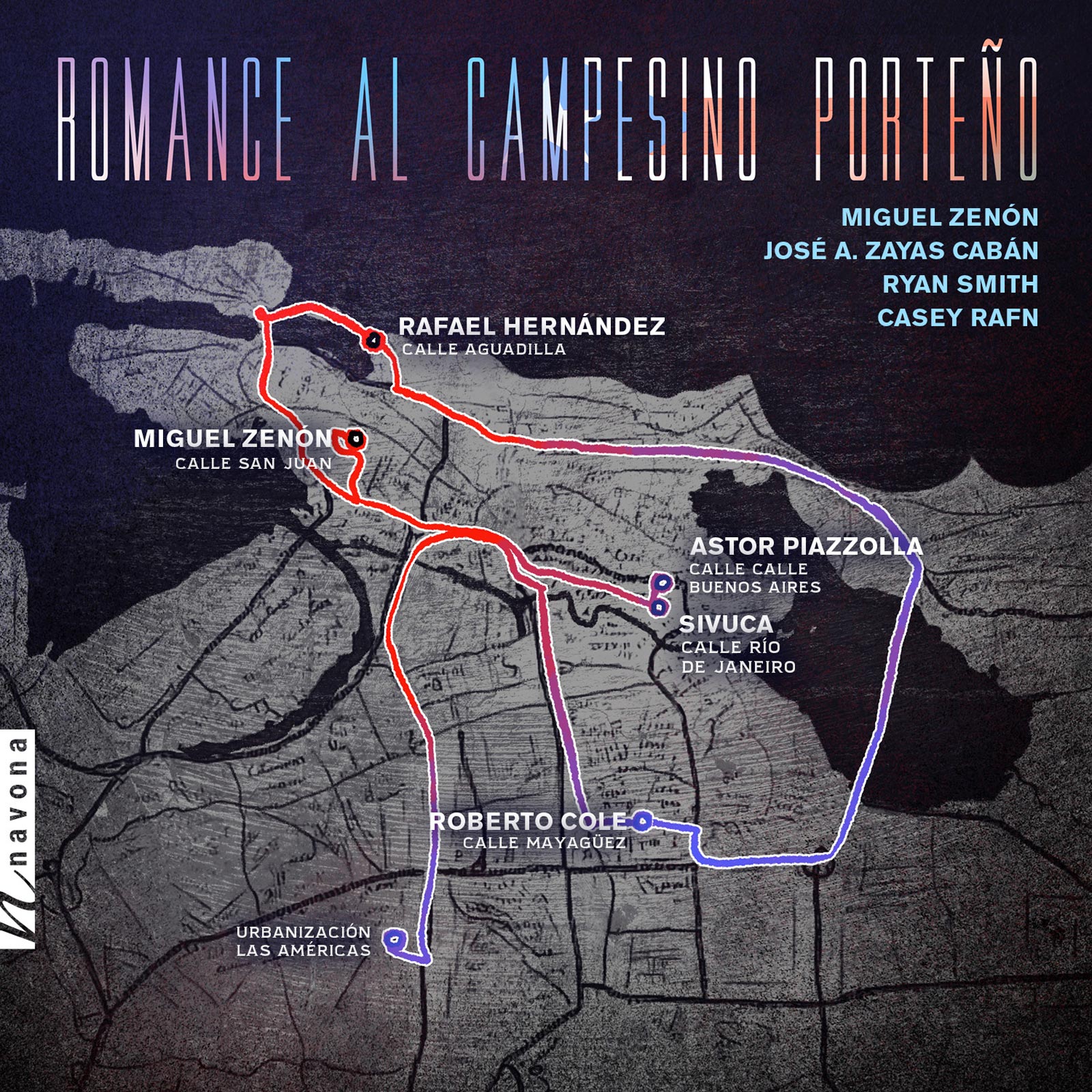Romance al Campesino Porteño
Sivuca composer
Rafael Hernández composer
Miguel Zenón composer, alto saxophone
Astor Piazzolla composer
Rafael Hernández composer
Roberto Cole composer
José A. Zayas Cabán soprano saxophone
Ryan Smith tenor saxophone
Casey Rafn piano
Navona Records is proud to present ROMANCE AL CAMPESINO PORTEÑO, an album threading saxophonist José Antonio Zayas Cabán’s childhood memories with music both old and new. The tunes of his childhood and his culture sonically surround a newly-composed piece, the GRAMMY®-nominated El País Invisible, that addresses Puerto Rico’s political status as a commonwealth of the United States Empire. Featuring Miguel Zenón, Ryan Smith, Casey Rafn, and Zayas Cabán himself, ROMANCE AL CAMPESINO PORTEÑO explores the textures of Puerto Rico and Latin America, and the sounds of both struggle and celebration.
“ROMANCE AL CAMPESINO PORTEÑO is an artful scream into the void of forgetting,” says essayist Katheryn Lawson. “We hope you will listen. We hope you will remember.”
Listen
Stream/Buy
Choose your platform
Track Listing & Credits
| # | Title | Composer | Performer | |
|---|---|---|---|---|
| 01 | Um Tom para Jobim | Sivuca, arr. Mitchell Toebben | Casey Rafn, piano; Ryan Smith, tenor saxophone; José A. Zayas Cabán, soprano saxophone; Miguel Zenón, alto saxophone | 4:44 |
| 02 | Preciosa | Rafael Hernández, arr. Mitchell Toebben | Casey Rafn, piano; Ryan Smith, tenor saxophone; José A. Zayas Cabán, soprano saxophone; Miguel Zenón, alto saxophone | 4:26 |
| 03 | El País Invisible | Miguel Zenón | Casey Rafn, piano; Ryan Smith, tenor saxophone; José A. Zayas Cabán, soprano saxophone; Miguel Zenón, alto saxophone | 11:52 |
| 04 | Estaciones Porteñas: I. Primavera | Astor Piazzolla, arr. Mitchell Toebben | Casey Rafn, piano; Ryan Smith, tenor saxophone; José A. Zayas Cabán, soprano saxophone; Miguel Zenón, alto saxophone | 5:58 |
| 05 | Estaciones Porteñas: II. Verano | Astor Piazzolla, arr. Mitchell Toebben | Casey Rafn, piano; Ryan Smith, tenor saxophone; José A. Zayas Cabán, soprano saxophone; Miguel Zenón, alto saxophone | 7:36 |
| 06 | Estaciones Porteñas: III. Otoño | Astor Piazzolla, arr. Mitchell Toebben | Casey Rafn, piano; Ryan Smith, tenor saxophone; José A. Zayas Cabán, soprano saxophone; Miguel Zenón, alto saxophone | 7:37 |
| 07 | Estaciones Porteñas: IV. Invierno | Astor Piazzolla, arr. Mitchell Toebben | Casey Rafn, piano; Ryan Smith, tenor saxophone; José A. Zayas Cabán, soprano saxophone; Miguel Zenón, alto saxophone | 7:37 |
| 08 | Los Carreteros | Rafael Hernández, arr. Mitchell Toebben | Casey Rafn, piano; Ryan Smith, tenor saxophone; José A. Zayas Cabán, soprano saxophone; Miguel Zenón, alto saxophone | 3:27 |
| 09 | Romance del Campesino | Roberto Cole, arr. Mitchell Toebben | Casey Rafn, piano; Ryan Smith, tenor saxophone; José A. Zayas Cabán, soprano saxophone; Miguel Zenón, alto saxophone | 3:51 |
Recorded March 11-12, 2021 at Wild Sound Recording Studio in Minneapolis MN
Producer & Engineer Steve Kaul, José A. Zayas Cabán
Executive Producer Bob Lord
A&R Director Brandon MacNeil
A&R Jacob Smith
VP of Production Jan Košulič
Audio Director Lucas Paquette
VP, Design & Marketing Brett Picknell
Art Director Ryan Harrison
Design Edward A. Fleming
Publicity Patrick Niland
Artist Information
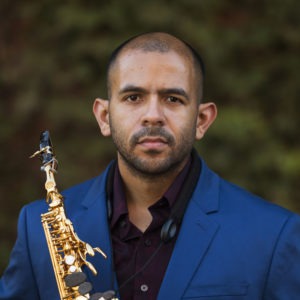
José Antonio Zayas Cabán
A Grammy-nominated artist and McKnight Fellow, José A. Zayas Cabán has presented performances and taught master classes throughout Europe, the Caribbean, and North America. A native Puerto Rican (born and raised in Mayagüez PR) and musician activist, José now resides in Minneapolis MN and is building an artistic career focused on developing projects, albums, and collaborations that address, respond, and raise awareness about current events and social issues.

Miguel Zenón
“This young musician and composer is at once reestablishing the artistic, cultural, and social tradition of jazz while creating an entirely new jazz language for the 21st century.”
— MacArthur Foundation, 2008.
Multiple Grammy Nominee and Guggenheim and MacArthur Fellow Miguel Zenón represents a select group of musicians who have masterfully balanced and blended the often contradictory poles of innovation and tradition. Widely considered as one of the most groundbreaking and influential saxophonists and composers of his generation, he has also developed a unique voice as a conceptualist, concentrating his efforts on perfecting a fine mix between jazz and his many musical influences.

Ryan Smith
Multiple woodwind specialist Ryan Smith is drawn to music across the spectrum of genres, regularly performing throughout the Midwest with symphony orchestras, chamber ensembles, jazz combos, pit orchestras, and rock bands. As an international performer, he has toured in São Paulo, Rome, and Milan with the Américo Project and given concerts in Hong Kong and China with the Iowa Saxophone Ensemble. Smith serves as Artistic Director of HTLIC Media, an Iowa City music and arts nonprofit organization that supports the creation and performance of original works by Iowa artists with socially relevant content. Most recently in that role, he organized and directed the performance of Esteban and the Children of the Sun at the Englert Theater in Iowa City. This mixed-media, multi-genre collaboration tells the story of the first African explorer of North America, Estevanico (Esteban the Moor), who was brought to the New World as a slave in the 16th century. Smith holds Doctor of Musical Arts and Master of Music in Jazz Studies degrees from the University of Iowa. He teaches applied woodwinds and improvisation at Grinnell College, Cornell College, and St. Ambrose University.
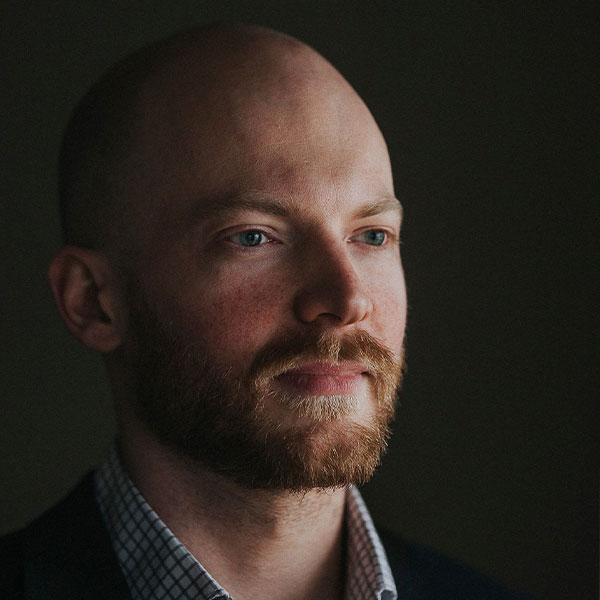
Casey Rafn
Minneapolis-based pianist Casey Rafn enjoys a varied career both in the United States and abroad. As a collaborative pianist, he has performed at venues in Latin America, New York City, Canada, and across the United States. He has performed with the Minnesota Orchestra and VocalEssence, and can often be found as a chamber musician with members of the Minnesota Orchestra, Saint Paul Chamber Orchestra, or faculty from the University of Minnesota. He is a member of the saxophone-piano trio {Trés}, which performs in both Puerto Rico and the continental United States. Apart from his collaborative work, he enjoys solo playing, having taken top prizes at the International Liszt-Garrison Competition in Baltimore, as well as appearing as a soloist with Duluth-Superior Symphony Orchestra. He is currently on staff at the University of Minnesota School of Music, Lundstrum Performing Arts, and St. Paul Conservatory for Performing Artists.
Mitchell Toebben
Mitchell Toebben is an arranger and composer from Columbia MO. He studied music at Truman State University in Kirksville MO, focusing primarily on composition and theory, in addition to jazz and the saxophone. While there, he was also active in its chapter of Phi Mu Alpha Sinfonia. He has always been interested in many different styles of music, with experience writing and performing in the classical tradition, jazz, Latin American music, electronic music, musical theater, and others. Another area of interest has been mathematically-oriented music theory in general and especially geometrical approaches to set theory, which essentially means mapping out all the types of harmonies (or any collections of pitches) to investigate how they are structurally related to each other. Although he has written for various small and large ensembles, many of his arrangements have featured saxophones, given his background playing the instrument and his longtime collaboration with fellow saxophonist José Zayas Cabán.
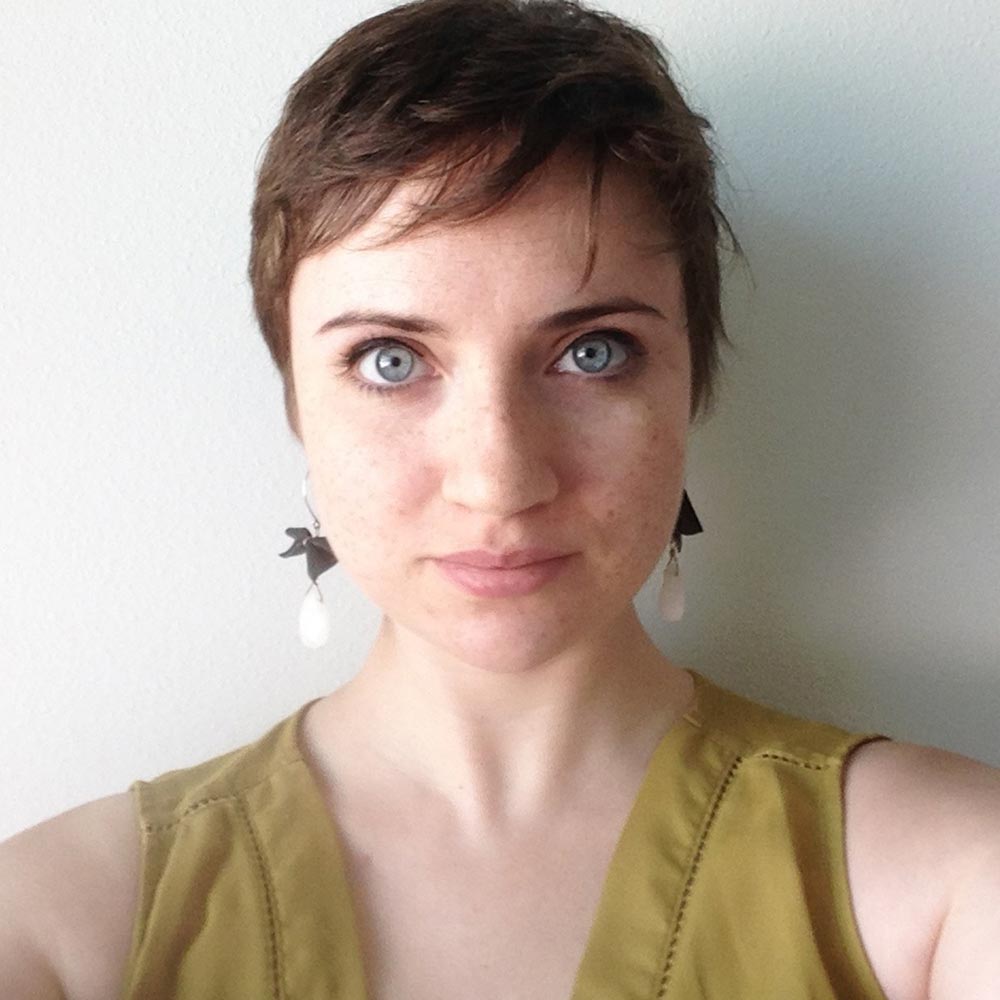
Katheryn Lawson
Katheryn Lawson is a Ph.D. candidate in History, currently writing her dissertation on Black Philadelphians, pet keeping, and animal care. She has been previously published on Girl Scout music and bird calls in children’s song collections, while more recent digital essays include Pet Keeping and Pet Hiding in Black America and The Little-Known History of Cat Litter. She holds bachelor’s degrees in Music Performance (trumpet) and English, and Master’s degrees in historical musicology, library and information science, and History. She works full-time as an archivist.
Notes
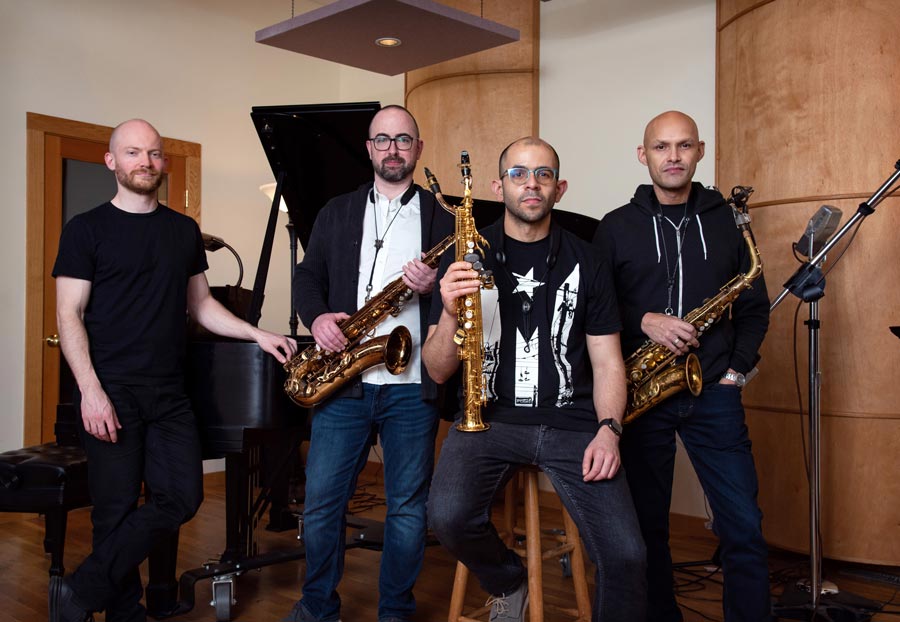
from left: Casey Rafn, Ryan Smith, José A. Zayas Cabán, Miguel Zenón
